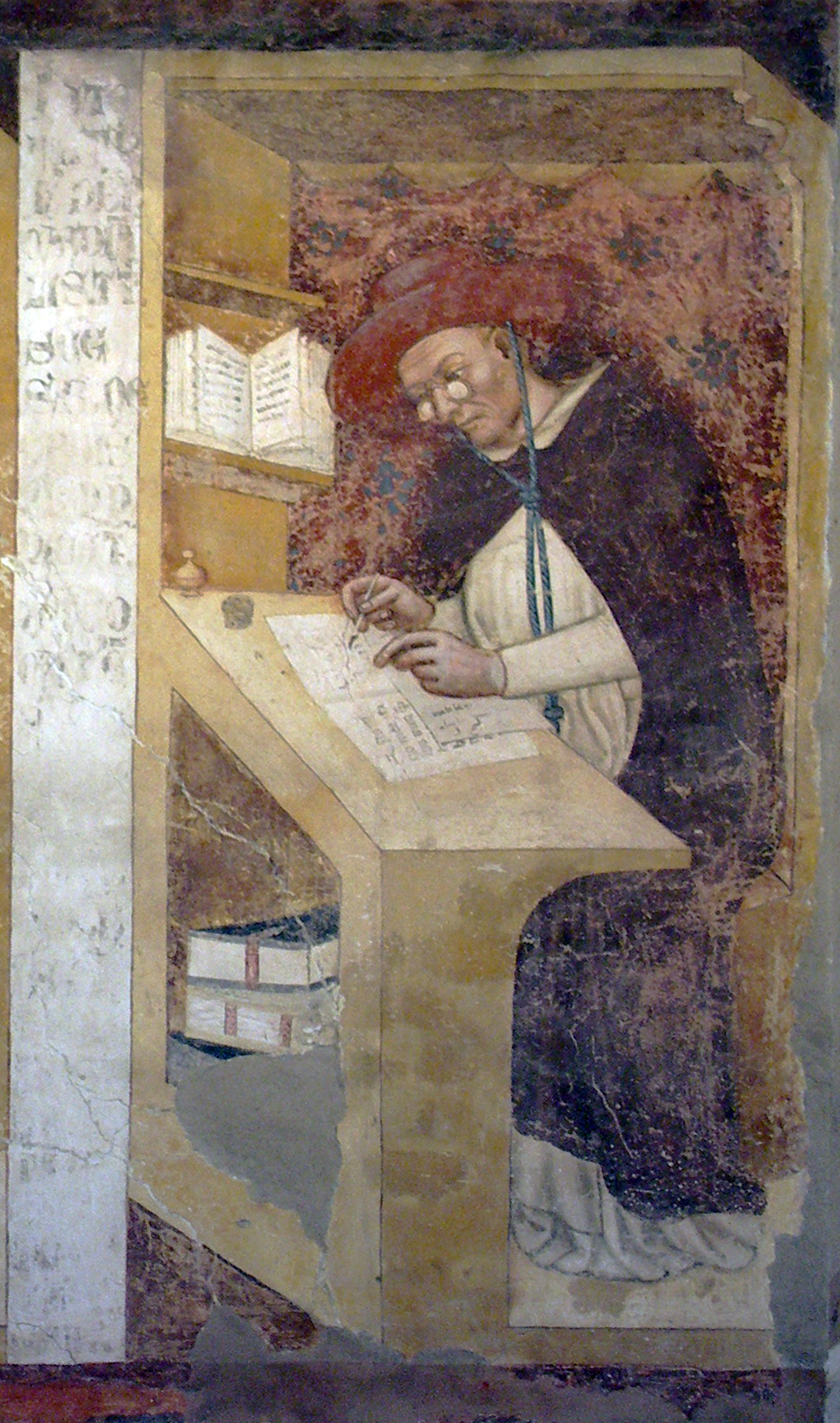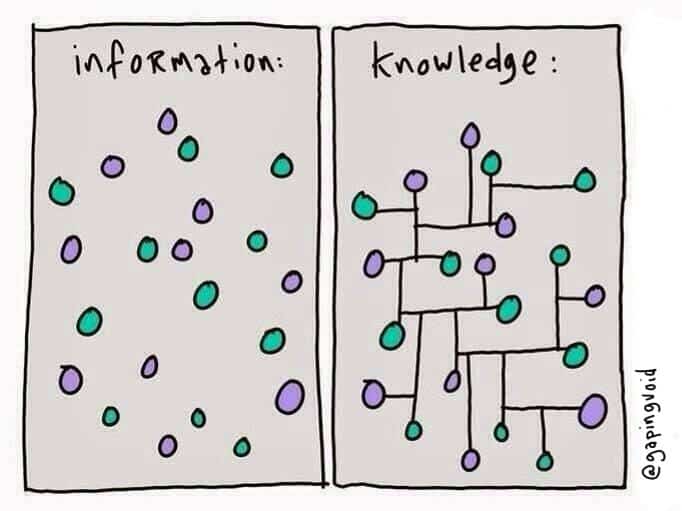The radio comedy sketch show, Round the Horne, introduced two regular characters, Julian and Sandy, who spoke a version of polari.
- Aug 2025
-
www.theguardian.com www.theguardian.com
-
- Dec 2024
-
www.theatlantic.com www.theatlantic.com
-
The Atlantic. Review of Plutarch’s Lives, by Arthur Hugh Clough, John Dryden, and Plutarch. January 1860. https://www.theatlantic.com/magazine/archive/1860/01/plutarchs-lives/627616/
Some excellent quotes and evidence for the importance of Plutarch's Lives, almost more so than the importance of this particular translation.
-
- Feb 2024
-
Local file Local file
-
Hugh will be the first to produce aconcordance to the Bible, to break the book down and rearrange itinto an alphabetical index of its words.
Hugh of Saint-Cher was the first person to produce a concordance of the Bible around 1230.
-
In fact, this final detail is a mistake, an anachronism. Hugh died acouple of decades too early to have benefitted from this invention:two magnifying glasses bound together by a rivet in their handles.
The image of Hugh of Saint-Cher wearing glasses in the fresco at the former convent of San Niccolò, Chapter Room, Treviso, is an anachronism as their invention was decades following his death in 1263.
-
the fresco, byTomasso da Modena, was painted in 1352). It stresses theDominicans’ commitment to Bible study and to scholarship, and noportrait conveys this more than the image of Hugh of St Cher.
 Image from: https://commons.wikimedia.org/wiki/File:38_Ugo_da_San_Caro.jpg
Image from: https://commons.wikimedia.org/wiki/File:38_Ugo_da_San_Caro.jpgUgo da San Caro, serie dei Quaranta domenicani illustri, ex convento di San Niccolò, Sala del Capitolo, Treviso, 1352 (altezza di ciascun ritratto 150 cm circa) Image by Risorto Celebrano, licensed under the Creative Commons Attribution-Share Alike 3.0 Unported license.
Thought to be one of the first images of a person wearing glasses. Image dated 1352.
-
- May 2023
-
random-blather.com random-blather.com
-
https://random-blather.com/2014/04/28/information-isnt-power/
 Illustration by David Somerville based on the original by Hugh McLeod.
Illustration by David Somerville based on the original by Hugh McLeod.Link to: https://hypothes.is/a/ysRBGgACEe6UNPvIvmWBkQ
This diagram is roughly a cartoon of the zettelkasten process, especially if the panels are labeled: reading, excerpting/synopsis, linking, serendipity, writing.
-
-
www.gapingvoid.com www.gapingvoid.com
- Apr 2023
-
-
Die Oberflächentemperaturen der Ozeane haben im April einen neuen allzeitrekord erreicht noch nie in der aufgezeichneten Geschichte haben sich die Temperaturen so schnell und so stark erhöht wie im Augenblick. Es gibt deutliche Anzeichen für ein starkes El Niño-Phänomen in diesem Jahr und Vermutungen, dass deshalb die 1,5 Grad-Grenze schon im kommenden Jahr überschritten werden wird. https://www.bbc.com/news/science-environment-65339934
-
- Mar 2023
-
en.wikipedia.org en.wikipedia.org
- May 2022
-
Local file Local file
-
One of the masters of the school, Hugh (d. 1140 or 1141), wrote a text, the Didascalicon, on whatshould be learned and why. The emphasis differs significantly from that of William of Conches. It isdependent on the classical trivium and quadrivium and pedagogical traditions dating back to St.Augustine and Imperial Rome.
Hugh of St. Victor wrote Didascalicon, a text about what topics should be learned and why. In it, he outlined seven mechanical arts (or technologies) in analogy with the seven liberal arts (trivium and quadrivium) as ways to repair the weaknesses inherit in humanity.
These seven mechanical arts he defines are: - fabric making - armament - commerce - agriculture - hunting - medicine - theatrics
Hugh of St. Victor's description of the mechanical art of commerce here is fascinating. He says "reconciles nations, calms wars, strengthens peace, and turns the private good of individuals into a benefit for all" (doublcheck the original quotation, context, and source). This sounds eerily familiar to the common statement in the United States about trade and commerce.
Link this to the quote from Albie Duncan in The West Wing (season 5?) about trade.
Other places where this sentiment occurs?
Is Hugh of St. Victor the first in history to state this sentiment?
-
- Apr 2022
-
-
“hold no learning in contempt, for all learning is good.”
-
-
-
In his manuscript, Harrison spoke of machina with respect to his filing cabinet and named his invention ‘Ark of Studies’. In rhetorical culture, ‘ark’ had been a metaphor that, among many others, denoted the virtual store-house that orators stocked with vivid images of memorable topics (res) and words (verba). In Harrison’s manuscript, ‘ark’ instead became a synonym for ‘mechanical’ memory. In turn, in the distinction between natural and artificial memory, consciousness was compelled to leave its place and to shift to the op-posing side.
Thomas Harrison used the word machina to describe his 'Ark of Studies', a filing cabinet for notes and excerpts from other works. This represents part of a discrete and very specific change on the continuum of movement from the ars memoria (artificial memory) to the ars excerptendi (note taking). Within the rhetorical tradition relying on creating memorable images for topics (res) and words (verba) the idea of an ark was often used as a memory palace as seen in Hugh of St. Victor's De arca Noe mystica, or ‘‘The Ark of Noah According to the Spiritual Method of Reading" (1125–30). It starts the movement from natural and artificial memory to a form of external and mechanical memory represented by his physical filing cabinet.
Reference Yates and Carruthers for Hugh of St. Victor.
-
- Feb 2022
-
www.abc.net.au www.abc.net.au
-
The idea of the index was invented twice in roughly 1230.
Once by Hugh of Saint-Cher in Paris as a concordance of the Bible. The notes towards creating it still exist in a variety of hands. The project, executed by a group of friars at the Dominican Friary of Saint-Jacques, listed 10,000 words and 129,000 locations.
The second version was invented by Robert Grosseteste in Oxford who used marginal marks to create a "grand table".
The article doesn't mention florilegium, but the head words from them must have been a likely precursor. The article does mention lectures and sermons being key in their invention.
<small><cite class='h-cite via'>ᔥ <span class='p-author h-card'>Aaron Davis</span> in 📑 Monks, a polymath and an invention made by two people at the same time. It’s all in the history of the index | Read Write Collect (<time class='dt-published'>02/15/2022 21:22:10</time>)</cite></small>
-
- Jun 2021
-
Local file Local file
-
Willis is more concerned with the construction of a perfectly orderedmental place system than with imagery.
How similar or dissimilar is this over description in Mnemonica by John Willis to the palace built using Noah's Ark by Hugh of St. Victor?
-
- May 2017
-
nfnh2017.scholar.bucknell.edu nfnh2017.scholar.bucknell.edu
-
Frost Bulb
Hugh M. French, a member of the department of geography at the University of Ottawa, states that “nowhere has the frost heave problem been more critical than in the recent design of proposed chilled buried gas pipelines in Arctic regions” in his article entitled “Periglacial Geomorphology in North America: Current Research and Future Trends.” These chilled buried gas pipelines must function under extremely harsh conditions. They will be exposed to sub-zero temperatures in Arctic regions. Any water and vapor will “migrate towards the pipe” causing a frost bulb to form. This frost bulb will lead to the formation of an ice lens or numerous ice lenses which will cause frost heave around the chilled buried pipe (French, 1987). There are currently many techniques to attempt to predict the behavior of a buried pipeline that experiences frost heave. One such attempt to describe this phenomenon was proposed by Selvadurai and Shinde, both members of the American Society of Civil Engineers, in which they describe a detailed model of a frost heave zone caused by its associate frost bulb. They base their model off of the “heave of a frost bulb zone that develops around the pipeline as it transmits its contents such as chilled natural gas” (Selvadurai & Shinde, 1993).

References
French, H. M. (1987). Periglacial Geomorphology in North America: Current Research and Future Trends. Ecological Bulletins, 5-16. Selvadurai, A. P., & Shinde, S. (1993). Frost Heave Induced Mechanics of Buried Pipelines. American Society of Civil Engineers, 1929-1951.
-
- Feb 2017
-
static1.squarespace.com static1.squarespace.com
-
Their style docs not suit modern taste and their theory docs not conform lo modem science.
This paragraph reminds me of my microresponse of "what rhetoric will be." With Blair emphasizing the importance of knowing classic rhetoricians and their styles, his point of their styles not withstanding time illustrates the ever-changing nature and flexibility of rhetoric, while still managing to place that importance on where rhetoric came from, as well
-
- Apr 2016
-
medium.com medium.com
-
Books can learn from the web how to be bounded, but open.The web can learn from books how to be open, but bounded.
Tags
Annotators
URL
-
- Mar 2016
-
-
David Wiley of Lumen Learning calls this “content as infrastructure,”
-
-
reb.us reb.us
-
Rebus Open Webbooks Building knowledge to build on
Tags
Annotators
URL
-
